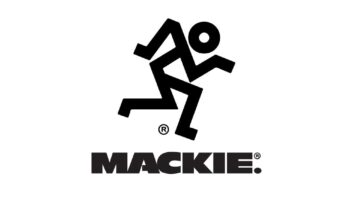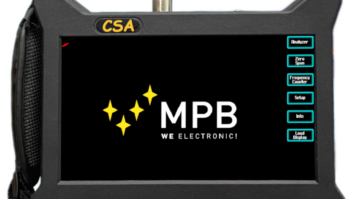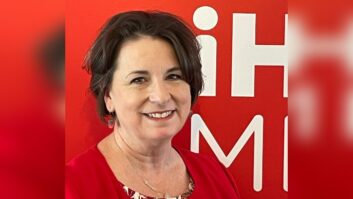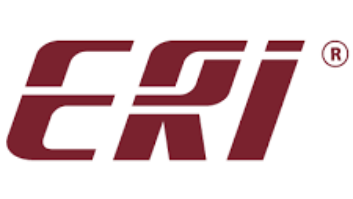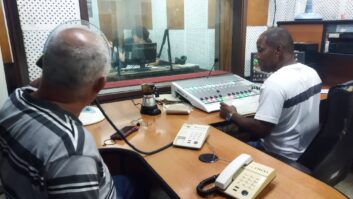
The Mackie DL1608 is shown working a WNBA game.
Compact mixers have been a valuable tool of broadcasters for decades. Early units such as the Shure M series were solid but due to technology limitations lacked features found in studio-based mixers. In the 1990s, Mackie began producing compact mixers giving users more inputs, equalization and auxiliary outputs in a small portable form factor.
As technology has continued to evolve digital mixing, what was at one time only available to those with a large budget has now become affordable. With the proliferation of high-power processors and FPGAs, it is possible to create digital compact mixers with features that were at one time relegated to high-dollar live or studio models.
IPAD
Mackie, like several other manufacturers, has made its own foray into the digital compact mixer domain, with the DL1608 and DL806. However, the DL series is unique in that they contain no customary control surface items such as physical faders, switches or meters.
Mackie recognized that many users of digital mixers were not using the physical mixer interface, but instead were using an iPad via Wi-Fi to control their digital mixer remotely.
Mackie chose to design a digital mixer that uses the iPad as the exclusive control surface for the mixer instead of spending money to design and produce a conventional control surface. Production cost is lowered, and the size of the mixer is dramatically smaller. Thanks to the software-based design, both the user interface and mixer can be upgraded and redesigned easily, quickly and without most physical manufacturing considerations.
Since the DL series lacks the typical physical controls of a mixer, Mackie has designed into the top an angled iPad docking tray. This comes with a captive bracket to prevent removal of the iPad; and the mixer has a Kensington lock port for securing the mixer in permanent installs. With the iPad placed into the tray the mixer has a similar feel as you would have with a conventional mixer but instead the user is utilizing a touchscreen for control.
When the iPad is docked in the tray, the mixer provides power to charge the iPad, a direct data connection allows control of the mixer without Wi-Fi and the digital audio in and out from the iPad provides the ability to playback and record audio.
Running the show is the Master Fader application, a free app that can be downloaded from the App Store. It can operate with or without the mixer, allowing potential buyers to demo the mixer functions prior to purchasing the mixer.
Despite the lack of typical controls, Mackie has done a good job of reproducing the look and feel of a regular mixer. The default view provides access to eight faders at a time but a quick swipe motion will allow you to scroll through the various faders. The master fader for the active layer is always available on the right side of the screen. There are up to nine layers of faders, L-R, auxiliaries, reverb and delay. At the top of each channel is an EQ image that when tapped takes you to the “fat channel” for the associated fader. From this screen you can swipe up or down to access the four-band parametric EQ, gate and compressor, reverb and delay options.
There are up to eight outputs from the mixer, depending on the model, the main L–R output and four or six auxiliary outputs. Each output has its own 31-band equalizer and its own dedicated compressor. The auxiliary outputs can be either pre or post but the pre-feed retains the EQ, gate and compressor functions. Mackie is readying v2 of the software, which will provide a pre-DSP option allowing the EQ, gate and compressor to also be bypassed. Also, the auxiliaries can be switched to mono or stereo-linked operation.
The beauty of the DL1608 is it provides great features and numerous inputs for broadcasters in a small interface that can be taken to any stadium or arena. The parametric EQ is great for crowd and effects microphones, the individual channel compressors are great for taming announcers who like to shout during big plays, and the numerous auxiliary outputs give you the capability to have individual headphone feeds, locker room feeds, sideline feeds, etc.
As an example, I use Henry Talent Pods and I can provide each announcer with a custom feed with just what they want to hear. If they want louder effects audio or a continuous feed of the sideline announcer I can provide that in a custom mix. If I had one complaint about the DL series it would be the lack of various L–R outputs. Previous Mackie mixers provided XLR, 1/4-inch and RCA outputs, the DL Series only provides one pair of XLR outputs for the L–R mix.
Product Capsule
Mackie DL1608
Digital Live Sound Mixer w/iPad Control
Thumbs Up:
Compact size
Touchscreen
DSP tools
Thumbs Down:
Lack of various L–R connections
Preamps are not recallable
External power supply
Price: $1,249.99
For information, visit www.mackie.com/products/dlseries.
I’ve found the Mackie DL series to be an easy mixer to operate via the iPad touchscreen interface. Despite the lack of physical faders I have operated up to four faders simultaneously during basketball games to control the court microphones. Additionally, even with the bright arena lighting for TV, I have had no difficulty seeing games, and a nice benefit of the backlit screen is being able to see the controls during blackouts for the pregame festivities. I have also used the mixer at other station events including an artist performance at a local mall where the Wi-Fi freedom allowed me to roam freely during the performance to listen and mix from several locations. Of course, the mixer is also equally suited for live band recording, with plenty of factory presets for various instruments and vocals.
People are impressed when they see the mixer in use because of its compact size and the number of features it has built in. While the amount of equipment I carry to a broadcast hasn’t changed, the capabilities of what I can provide have increased significantly. I also get a good laugh when the talent can look down on the screen and see their names and even their picture, if I choose, on the digital scribble strip below their fader.
The DL1608 quickly has replaced my older Mackie VLZ series mixer as my primary mixer for remote broadcasts because it offers so many more features and capabilities in a compact package. The age of digital mixing for sporting and remote broadcasts has arrived and I like it.
Brett Gilbert is director of engineering and IT — Tulsa, for Clear Channel Media and Entertainment in Tulsa, Okla.





